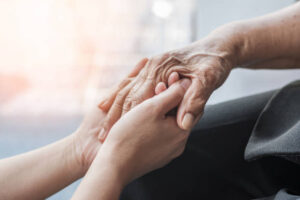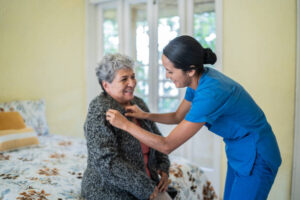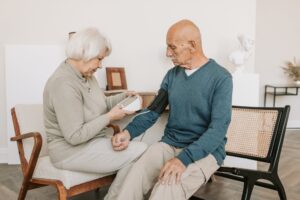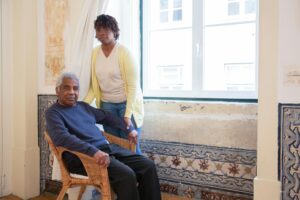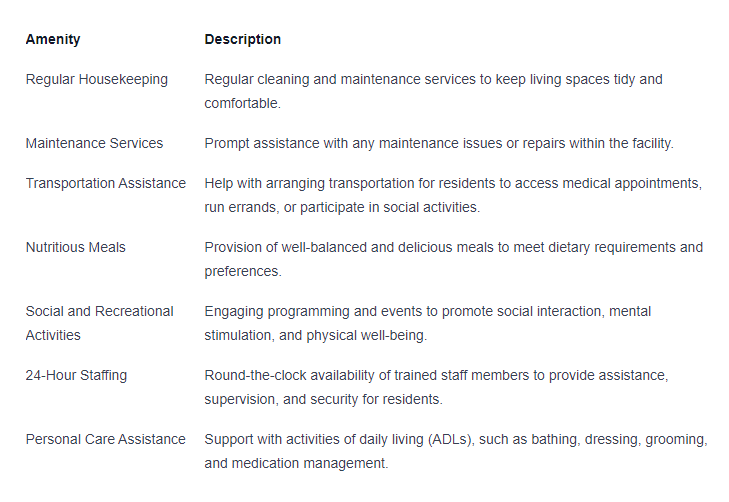Exploring Hospice Care for Seniors at Home
When considering hospice care for seniors, there are two primary options to explore: hospice care at home and inpatient hospice care.
Understanding Hospice Care
Hospice care provides comfort-oriented care to individuals with advanced illnesses when curative medical treatments are no longer effective or preferred. It is intended for patients with a prognosis of six months or less, as certified by a physician (VITAS Healthcare). The aim of hospice care is to enhance the quality of life and provide support to both patients and their families during this challenging time.
Hospice Care at Home vs. Inpatient Hospice Care
Hospice care at home allows seniors to receive hospice care services in the comfort of their own familiar surroundings. This option offers several benefits, including emotional support from loved ones and the ability to be surrounded by familiar objects and memories. According to MeloDia Care, seniors receiving hospice care at home often experience improved quality of life.
In contrast, inpatient hospice care is provided in a specialized facility, offering round-the-clock medical care and support. This option may be beneficial for seniors requiring complex symptom management or those without a strong support system at home. Inpatient hospice care provides a structured environment where medical professionals can closely monitor and address the needs of the patient.
The decision between hospice care at home and inpatient hospice care depends on various factors, including the senior’s medical condition, the availability of a robust support system, and personal preferences. Home hospice care can be cost-effective compared to inpatient hospice care, as it may eliminate the need for expensive facility fees (MeloDia Care). However, it is essential to ensure that families involved in providing care at home have a robust support system and access to necessary resources, such as medical equipment and skilled healthcare professionals, to ensure the senior’s comfort and well-being.
Ultimately, the choice between hospice care at home and inpatient hospice care should be based on the individual needs and preferences of the senior and their family. It is advised to consult with healthcare professionals and hospice care providers to determine the most suitable option for the unique circumstances of the senior.
Benefits of Hospice Care at Home
When considering hospice care for seniors, providing care at home offers numerous benefits that can greatly impact their well-being and overall experience. Let’s explore two key advantages: comfort and emotional support, and familiar surroundings leading to improved quality of life.
Comfort and Emotional Support
Hospice care at home allows seniors to be in familiar surroundings, providing comfort and emotional support from loved ones during their final days (MeloDia Care). The presence of family members and close friends can bring a sense of peace and reassurance, creating an environment of emotional well-being. Companionship plays a crucial role in the hospice care journey, offering both emotional support and a comforting presence during challenging and serene moments (Caring for Seniors).
The availability of hourly or 24-hour care services in home hospice care ensures comprehensive support to guarantee the comfort and well-being of seniors. This approach allows caregivers to tailor their care to the specific needs and preferences of the individual, ensuring their comfort and dignity are prioritized (Caring for Seniors).
Familiar Surroundings and Improved Quality of Life
Seniors receiving hospice care at home often experience an improved quality of life compared to inpatient hospice care. Being surrounded by familiar objects, memories, and the presence of loved ones can enhance their overall well-being. This familiarity can provide a sense of peace and security, reducing anxiety and stress commonly associated with aging and end-of-life care.
In addition, being in a familiar environment allows seniors to maintain a sense of control over their lives and maintain a connection to their personal routines. It can contribute to a greater sense of autonomy and promote a dignified end-of-life experience (Care At Home Services). This familiar setting can also minimize confusion or disorientation that may arise when transitioning to an unfamiliar environment.
By providing hospice care at home, seniors can experience a more peaceful and comfortable environment, surrounded by loved ones and familiar settings. This approach not only addresses their physical needs but also prioritizes their emotional well-being and the preservation of their dignity.
Considerations for Hospice Care at Home
When considering hospice care for seniors, providing care at home can offer numerous benefits. However, it’s important to take certain considerations into account to ensure the well-being and comfort of the senior. Two crucial factors to consider are a robust support system and necessary resources, as well as the cost-effectiveness and elimination of facility fees.
Robust Support System and Necessary Resources
For hospice care at home to be successful, it is essential to have a robust support system in place. This includes family members, friends, and caregivers who are available and committed to providing the necessary care and emotional support. The senior should have someone who can be present to assist with activities of daily living, administer medications, and attend to any emergent needs.
In addition to a support system, access to necessary resources is crucial. This may include medical equipment, such as hospital beds, oxygen tanks, or mobility aids, depending on the individual’s specific needs. Skilled healthcare professionals, such as nurses and aides, may also be required to provide specialized care and monitoring. Having these resources readily available ensures that the senior’s comfort and well-being are properly addressed throughout the hospice care journey.
Cost-effectiveness and Elimination of Facility Fees
One of the advantages of hospice care at home, as opposed to inpatient hospice care, is the potential cost-effectiveness it offers. By receiving care at home, seniors and their families may be able to avoid expensive facility fees associated with inpatient care (MeloDia Care). This can help alleviate financial burdens and provide a more affordable option for end-of-life care.
It’s important to note that while hospice care typically has zero out-of-pocket expenses related to the terminal diagnosis, other home health care services may not offer the same coverage. Unlike hospice care, home health care services may require patients to pay for medications, supplies, and equipment. Additionally, home health services may not cover inpatient stays if symptoms escalate and become unmanageable at home.
By carefully considering the support system, necessary resources, and cost-effectiveness, families can make informed decisions regarding hospice care at home for their senior loved ones. This option allows seniors to receive compassionate care in the comfort of their own familiar surroundings, enhancing their quality of life during this challenging time.
The Role of Hospice Care Providers
When it comes to hospice care for seniors at home, a crucial aspect is the presence of a dedicated interdisciplinary team of professionals who collaborate to provide comprehensive care and support. This team is comprised of various healthcare professionals who work together to address the physical, emotional, and spiritual needs of the patient and their loved ones.
Interdisciplinary Team in Hospice Care
Hospice care includes an interdisciplinary team that brings clinical, compassionate services to patients wherever they live. This team typically consists of the following professionals:
- Physician: The physician provides medical oversight and coordinates the patient’s overall care plan. They work closely with other team members to manage pain and symptoms, ensure medication management, and address any medical concerns.
- Nurse: Nurses play a crucial role in hospice care. They provide skilled nursing care, including monitoring the patient’s health, administering medications, managing symptoms, and coordinating with other healthcare professionals.
- Hospice Aide: Hospice aides provide personal care assistance to patients, assisting with activities of daily living (ADLs) such as bathing, dressing, and grooming. They work under the supervision of nurses to ensure the patient’s comfort and well-being.
- Chaplain: Chaplains offer spiritual support and guidance to patients and their families, respecting their individual beliefs and values. They can provide emotional and spiritual comfort during this challenging time.
- Social Worker: Social workers provide emotional support, counseling, and assistance with practical matters such as advance care planning, accessing community resources, and coordinating services. They help patients and their families navigate the emotional and logistical challenges that may arise.
- Volunteer: Volunteers offer companionship and support to patients and their families. They may engage in activities such as reading, listening, or providing respite for caregivers. Volunteers play an important role in enhancing the quality of life for patients.
Services Provided by Hospice Care Professionals
Hospice care professionals work together to provide a wide range of services to seniors receiving care at home. These services may include:
- Pain and Symptom Management: The interdisciplinary team focuses on managing pain and alleviating distressing symptoms to ensure the patient’s comfort.
- Caregiver Education: Professionals provide guidance and education to caregivers, equipping them with the knowledge and skills to provide optimal care and support.
- Emotional Support: The team offers emotional support to both the patient and their loved ones, helping them navigate the emotional challenges and providing a compassionate presence.
- Spiritual Care: Chaplains and other spiritual advisors provide spiritual support tailored to the patient’s beliefs and preferences, offering comfort and guidance during this transitional period.
- Coordination of Services: The team collaborates to coordinate various aspects of care, including medical appointments, therapy services, and access to community resources.
- 24/7 Availability: Hospice care professionals are available around the clock to address any concerns or provide guidance, ensuring consistent support for patients and their families.
The involvement of a multidisciplinary team ensures that seniors receiving hospice care at home have access to comprehensive and holistic support. By working together, these professionals aim to enhance the quality of life for patients, promote comfort, and provide compassionate care during the end-of-life journey.
Palliative Care vs. Hospice Care
When considering end-of-life care options for seniors, it’s important to understand the difference between palliative care and hospice care. While both provide support and improve the quality of life for individuals facing a life-threatening illness, there are distinct differences between the two.
Palliative Care as an Option
Palliative care is a type of care that provides support and improves the quality of life for patients facing a life-threatening illness and their family members. Unlike hospice care, palliative care can be considered during any stage of a serious illness for anyone and can even be used alongside curative treatments (Notre Dame Healthcare).
Palliative care professionals work closely with patients, care providers, and families to create personalized care plans that address unique needs and preferences. These plans encourage personal choices that align with values and priorities, including medical treatment options, living arrangements, and end-of-life care preferences.
Differentiating Palliative Care from Hospice Care
While palliative care focuses on improving the quality of life for individuals with a life-threatening illness, hospice care is specifically designed for individuals who are nearing the end of life. Hospice care is typically considered when curative treatments are no longer effective or desired.
The main difference between palliative care and hospice care is the stage of the illness. Palliative care can be provided at any stage, while hospice care is specifically for individuals with a prognosis of six months or less to live.
Palliative care services range from assessment and care planning to pain and symptom management, assistance with activities of daily living (ADLs), nutritional support, medication management, and support for caregivers. Care teams also offer educational support to both patients and their families (Notre Dame Healthcare).
Hospice care, on the other hand, focuses on providing comfort and support for individuals in their final stages of life. The goal of hospice care is to enhance the quality of life by managing symptoms, reducing pain and discomfort, improving emotional well-being, and fostering a sense of peace and comfort in familiar surroundings (Care At Home Services).
By understanding the distinctions between palliative care and hospice care, individuals and their families can make informed decisions about the type of care that best meets their needs. Whether choosing palliative care to address a serious illness at any stage or hospice care for end-of-life support, both options aim to provide comfort, support, and an enhanced quality of life for seniors and their families.
Selecting a Hospice Provider for Seniors at Home
When it comes to selecting a hospice provider for seniors receiving care at home, it’s important to make an informed decision. Comparing different hospices and asking relevant questions can help ensure the best possible care for your loved one. Additionally, considering accreditation and testimonials is crucial for evaluating the quality and reliability of a hospice provider.
Comparing Hospices and Asking Relevant Questions
To choose the right hospice provider for your senior loved one, it’s essential to compare different hospices. This involves researching and gathering information about each provider’s reputation, services offered, and the experiences of others who have utilized their services. By comparing hospices, you can make an informed decision that aligns with your loved one’s specific needs.
As you evaluate different hospices, consider asking relevant questions such as:
- What services does the hospice provide? It’s important to ensure that the hospice offers the specific services your loved one requires, such as pain management, emotional support, and assistance with daily activities.
- What is the availability of hospice care professionals? Determine how often nurses, doctors, and other professionals visit patients at home, and whether there is 24/7 access to support and assistance.
- How does the hospice handle emergencies? Inquire about the hospice’s protocols and response times in case of emergencies or urgent situations.
- What is the process for creating a personalized care plan? Understanding how the hospice involves the patient and their family in developing a customized care plan is crucial for ensuring that individual needs and preferences are met.
- What additional support services are available? Inquire about any additional services the hospice provides, such as counseling, spiritual support, or bereavement services for families.
Asking these relevant questions will help you gather the necessary information to make an informed decision about the hospice provider that best suits your loved one’s needs.
Importance of Accreditation and Testimonials
Accreditation is a vital factor to consider when selecting a hospice provider for seniors at home. Accredited hospices have undergone rigorous evaluations to ensure that they meet specific quality and safety standards. Choosing an accredited hospice provides reassurance that the provider adheres to recognized industry standards and guidelines.
Reading testimonials from prior clients can also provide valuable insights into the quality of care provided by a hospice. Testimonials allow you to hear directly from individuals who have experienced the services firsthand, offering an authentic perspective on the provider’s strengths and areas of excellence. By perusing testimonials, you can gain further assurance about the quality and reliability of a hospice provider.
When selecting a hospice provider for seniors at home, it’s crucial to consider both accreditation and testimonials to make an informed decision. By choosing a reputable provider with positive feedback from previous clients, you can ensure that your loved one receives the highest level of care and support during this sensitive time.
Cultural sensitivity is another important aspect to consider in hospice care. It is crucial for providers to understand and respect the unique cultural needs and beliefs of the patient and their family, ensuring that care is delivered in a culturally appropriate manner. This sensitivity helps foster trust, understanding, and a more comfortable experience for the senior and their loved ones (Hospice Foundation, Coastal Home Care).
Ensuring Quality Hospice Care for Seniors at Home
When it comes to hospice care for seniors at home, ensuring quality and compassionate care is of utmost importance. Here are two key aspects to consider in order to ensure the best possible experience for your loved one.
Cultural Sensitivity in Hospice Care
Cultural sensitivity plays a vital role in providing effective and person-centered hospice care. It is crucial for hospice providers to understand and respect the unique cultural beliefs, practices, and values of the seniors and their families. This helps create a safe and supportive environment that honors their cultural background and preferences.
For example, hospice nurse Dorotea Gonzalez emphasizes the importance of cultural sensitivity in reaching out to communities like the Latino community (Hospice Foundation). By being aware of cultural nuances, hospice care providers can tailor their approach, communication, and care plans to better meet the needs of seniors from diverse cultural backgrounds.
To ensure cultural sensitivity in hospice care, it’s essential to choose a hospice provider that values and promotes cultural competence. Look for providers who have experience working with diverse populations and have implemented culturally sensitive practices in their care delivery.
Guidance and Support from Hospice Foundations
Hospice foundations play a crucial role in providing guidance, support, and resources for hospice care. Organizations like the Hospice Foundation of America (HFA) are dedicated to developing and applying the hospice care philosophy, enhancing the U.S. healthcare system, and promoting the role of hospice care within it.
These foundations offer valuable resources and information for families and caregivers, including guidance on the dying process, coping strategies, and end-of-life support. They can provide insights into best practices, help families navigate the hospice care journey, and offer support during this challenging time.
When choosing a hospice provider for seniors at home, it is recommended to consult resources provided by hospice foundations. These resources can help you compare different hospices, ask relevant questions, and make informed decisions to ensure quality hospice care for your loved one (Hospice Foundation).
By prioritizing cultural sensitivity and seeking guidance from hospice foundations, you can ensure that your loved one receives high-quality and compassionate hospice care at home. Remember to engage in open and honest conversations with your senior and their care team to understand their unique needs, preferences, and goals. Together, you can create a supportive and comforting environment that respects their cultural background and provides the best possible care during this stage of life.
The Importance of Advance Care Planning
In the context of hospice care for seniors at home, advance care planning plays a crucial role in ensuring that their wishes and preferences are respected during the end-of-life journey. Initiating conversations and documenting these wishes are essential components of advance care planning.
Initiating Conversations and Documenting Wishes
Advance care planning conversations should be initiated early by individuals diagnosed with serious illnesses, in conjunction with their family and healthcare providers. These discussions provide an opportunity to express desires regarding the type of care one wishes to receive, including hospice care (National Institute on Aging). By engaging in open and honest conversations, individuals can ensure that their values, beliefs, and goals are understood and taken into account when making healthcare decisions.
Initiating these conversations can sometimes be challenging, but they are crucial for ensuring that seniors receive the care that aligns with their wishes. Family members and primary healthcare providers play a vital role in supporting and facilitating these discussions. By addressing concerns, answering questions, and providing emotional support, they can help seniors feel empowered and in control of their healthcare choices (Notre Dame Healthcare).
Documentation of end-of-life wishes is an essential aspect of advance care planning. Tools like PREPARE for Your Care, an online program available in English and Spanish, assist in documenting and expressing these wishes. By utilizing such tools, individuals can ensure that their preferences regarding the use of life-sustaining treatments, pain management, and other aspects of care are clearly communicated and recorded.
Tools for Advance Care Planning
When it comes to advance care planning, various tools and resources are available to assist individuals and their families. One such tool is PREPARE for Your Care, an online program that guides individuals through the process of documenting their end-of-life wishes. This comprehensive program helps individuals consider their values, clarify their goals, and communicate their preferences to their healthcare providers and loved ones. By completing these documents, individuals can ensure that their wishes are known and respected.
In addition to online programs like PREPARE for Your Care, there are other resources available to aid in advance care planning. These include advance directives, such as living wills and durable power of attorney for healthcare, which legally outline an individual’s healthcare decisions in the event that they are unable to communicate them themselves. By completing these documents, individuals can designate a trusted person to make healthcare decisions on their behalf and ensure that their wishes are upheld.
It is important to periodically review and update advance care planning documents to reflect any changes in preferences or circumstances. By regularly revisiting and discussing these documents with healthcare providers and family members, seniors can ensure that their wishes are accurately documented and that their end-of-life care aligns with their current desires.
By initiating conversations and documenting end-of-life wishes through advance care planning, seniors can have peace of mind knowing that their preferences will be respected during their hospice care journey. These conversations and tools provide a framework for individuals to have a say in their care, ensuring that their values and beliefs are honored during this important stage of life.

